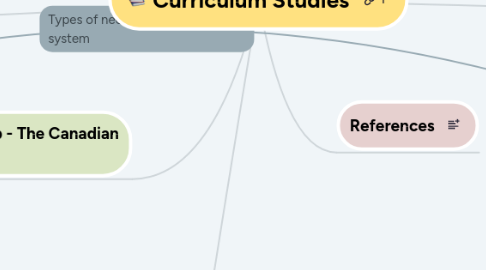
1. PIRLS Austria
1.1. Languages in use
1.1.1. German (official language in all Austria)
1.1.2. Slovenian (official language in some districts)
1.1.3. Croatian (official language in some districts)
1.1.4. Hungarian (official language in some districts)
1.2. Literacy
1.2.1. Bilingual classes in districts with multiple official languages
1.2.2. System hierarchically organised, centralised, and selective at an early stage.
1.2.3. Secondary school with minority language as compulsory subject
1.2.4. Modern, foreign language in all primary schools since grade 1
1.3. Overview of education system
1.3.1. Education is compulsory for 9 years. (Grade 1 to 9)
1.3.2. Preprimary education is viable for children up to age of 6 via crèches, kindergarten and private child care givers.
1.3.3. Provinces provide kindergarten (obligatory one year, since 2010) and compulsory public sector.
1.4. Reading instructions
1.4.1. The process is divided into crèches, kindergarten, Volksschule (Grade1-4, 6-10 years old), Lower secondary school on two levels - lower Allgemein bildende höhere Schule and higher Neue Mittelschule (Grades 5-8, 10-14 years old), Uper secondary school (Grades 9-13), Higher education institutions.
1.4.2. Some freedom to adapt the curriculum to local needs
1.4.3. The curriculum provides the general overarching aims
1.4.4. Teachers have pedagogical and didactical responsibility to select methods of instruction and sometimes also selecting teaching materials.
1.4.5. The basis of planning reading instructions is addressing students' individual needs and skills, but also long term goals.
1.4.6. The aim is to increase students reading competencies through various reading exercises and individualised reading promotion programs with specific exercises developing students' sensory, motor, language, movement and social skills.
1.4.6.1. .
1.4.7. Focus on student's individual reading preferences.
1.4.7.1. encourage reading abilities
1.4.7.2. built self-confidence as a reader
1.4.7.3. as a part of a process of making students responsible for their own learning
1.4.8. Focus on learning strategies
1.4.9. The curriculum does not provide the instructional materials as the part of the curriculum. Teachers select and work with different textbooks from various publishers, which were developed according to various methods but were approved by the Ministry.
1.4.9.1. Österreichischer Buchklub der Jugend
1.4.9.1.1. .
1.4.9.1.2. .
1.4.10. Cooperation with
1.4.10.1. Public libraries
1.4.10.2. Publishing houses
1.4.10.3. School libraries
1.4.11. Special programs
1.4.11.1. Program to detect students' with reading deficiencies at an early level.
1.4.11.2. Program for children who's language level does not fit the criteria (usually the immigrants children)
1.4.11.3. Program for students with special education needs.
1.4.11.3.1. .
2. Session 1 & 2
2.1. Curriculum
2.1.1. .
2.1.2. Framework
2.1.2.1. .
2.1.2.2. .
2.1.2.2.1. .
2.1.2.3. Taba's Seven Steps
2.1.2.4. Wiggins' and McTighe's backwards design
2.1.2.5. Walker's naturalistic approach
2.1.2.6. Wheeler's proces model
2.1.2.7. Tyler's Rationale
2.1.3. Aspects
2.1.3.1. Intended
2.1.3.2. Implemented
2.1.3.3. Hidden
2.1.3.3.1. .
2.1.3.4. Experienced
2.1.3.5. Excluded
2.1.3.6. Assessed
2.1.4. Seen as
2.1.4.1. praxis
2.1.4.2. a body of knowlege
2.1.4.3. product
2.1.4.4. process
2.1.5. The center
2.1.5.1. Subject-centered
2.1.5.2. Student-centered
2.2. Taxonomies
2.2.1. Bloom's Taxonomy
2.2.1.1. Blooms & Maslow
2.2.1.1.1. .
2.2.1.1.2. .
2.2.1.1.3. .
2.2.2. Danielson’s Depth Of Knowledge Framework
2.2.2.1. .
2.2.3. The TeachThought Learning Taxonomy
2.2.4. UbD’s Six Facets Of Understanding
2.2.5. Marzano & Kendall/Taxonomy
2.2.6. The Taxonomy Of Significant Learning
2.2.7. SOLO Taxonomy
3. Legend
3.1. Thoughts/Notes
3.2. Quotations
3.3. Ideas
3.4. Questions
3.5. Observations
3.6. New and interesting knowledge
4. School trip - The Canadian School
4.1. .
5. Session 3 & 4
5.1. Aimes and Objectives
5.1.1. .
5.1.2. aim -> goal -> objective
5.1.3. SMART OBJECTIVES
5.2. Content
5.3. Needs
5.3.1. Stakeholders
5.3.1.1. teachers'
5.3.1.2. parents'
5.3.1.3. students'
5.3.1.4. individual's
5.3.1.5. institutional's
5.3.1.6. societies'
5.3.2. Tools
5.3.2.1. surveys
5.3.2.2. questionnaires
5.3.2.3. tests
5.3.2.4. observations
5.3.2.5. focus groups
5.3.2.6. discussions
5.3.3. Types
5.3.3.1. Maslow's Pyramid
